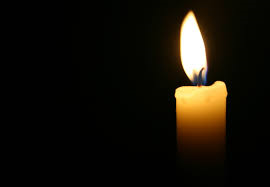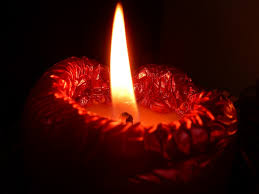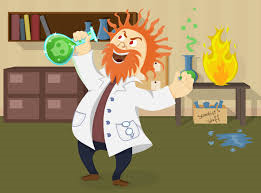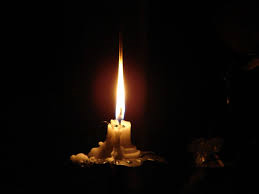
If protecting one’s home isn’t complicated enough, it appears that the soft, soothing glow of a candle’s flame may obscure some dark problems. Specifically, the use of candles may result in:
- reducing the internal air quality of your home
- increasing the chance of fire losses
- damages by particulate deposits on interior and exterior walls, carpets, furniture, appliances, window treatments, floors, and other surfaces
Further, the use of candles may also contribute to health problems from inhaling particulate matter or ingesting harmful chemicals.
Defining the Candle Problem

of a hazard than an aid.
Actually, there are a number of problems and they have been accentuated by a change in the market for candles. The last few years have seen an explosive growth in the popularity of candles. They are increasingly used for their traditional, decorative purpose, but the true surge in use has been due to their being marketed as scented candles for deodorizing and for a health-related purpose called aromatherapy.
In both of the above, sales-boosting instances, candle-makers have had to offer products with more intense scents. This is accomplished by adding scented oils into their wax mixture. The increased oil content causes candles to burn improperly and generates a substantially higher level of soot.
A Sooty Situation
It looks like soot, which is a carbon residue produced by burning, can create a large, expensive problem. Since soot is particulate matter that can be carried through the air, it can seriously stain walls, carpets, and personal property. Studies show that electronic and plastic components are also vulnerable to soot damage. Unfortunately, soot produced by poorly burning candles bonds very strongly, making it difficult to impossible to clean. Further, soot may contaminate a home’s heating system, including ductwork. The soot can then be spread throughout a home, creating widespread damage that is difficult to repair. Property stained by soot may have to be cleaned by professionals and, often, the property has to be replaced.
Troublesome candle ingredients

You may have assumed that the only materials found in candles were the wick and some type of wax. Surprise! Here’s a list of ingredients which may either be found in a candle or maybe created during combustion:
- Acetone Benzene Trichlorofluoromethane
- Carbon Disulfide 2 Butanone 1 1- Trichloroethane
- Trichloroethene Carbon Tetrachloride Tetrachloroethene
- Toluene Chlorobenzene Ethylbenzene
- Styrene Xylene Phenol
- Cresol Cyclopentene Lead
Another surprise is that the candle-making industry is not required to tell consumers about the ingredients used in their products, including when a wick is used which contains a lead core.
Poor candle design or practices

Besides the use of oils and chemicals, candle-makers sometimes create problems because they commit other mistakes. Candles may burn improperly (causing soot) because a candle’s wick may be off-center or there may not be a proper amount of air in the candle mixture. A candle may have a higher likelihood of causing a fire loss due to:
- an improper candle mixture which results in intense heat or high flames
- improper holders (glass that shatters or spills flammable liquid)
- wood holders that catch fire
- flammable items imbedded in the candle mixture such as potpourri
Coverage Under a Homeowner Policy?

losses started by candles?
Damage to a home or personal property due to soot can create serious problems for both an insurer and a homeowner. Losses involving soot can create thousands of dollars in damages. Depending upon the details surrounding a loss and the wording of the particular homeowner policy, coverage for the damage may not be available. Why? Because the source of loss might be considered the result of pollution which may be excluded. Another reason for rejecting a claim may be an assumption that the damage was gradual instead of sudden, so it wouldn’t be considered accidental and sudden damage. A claim could even be affected by the knowledge of the insured. For instance, even if the policy covers soot-related losses, a claim could be denied if a homeowner knew that the type of candle they used could cause damages.
Since the damage is caused by matter that is invisible to the naked eye, it could be difficult to prove that the loss was sudden. Tests can be used to determine the cause of stained or discolored property, but the testing can be expensive and the cost may have to be handled by the homeowner.
What To Do?
It’s all up to you. You might wish to ask more questions about the type of candles you use or curtail your use. You can also discuss whether coverage is available under your homeowner policy with an insurance professional. If you do use candles frequently, you may also want to check your home thoroughly for any stains or discoloration, including any contamination of your heating system.
COPYRIGHT: Insurance Publishing Plus, Inc. 2016
All rights reserved. Production or distribution, whether in whole or in part, in any form of media or language; and no matter what country, state or territory, is expressly forbidden without written consent of Insurance Publishing Plus, Inc.

 Contact
Contact
 Email an Agent
Email an Agent

 Click to Call
Click to Call Get Directions
Get Directions


